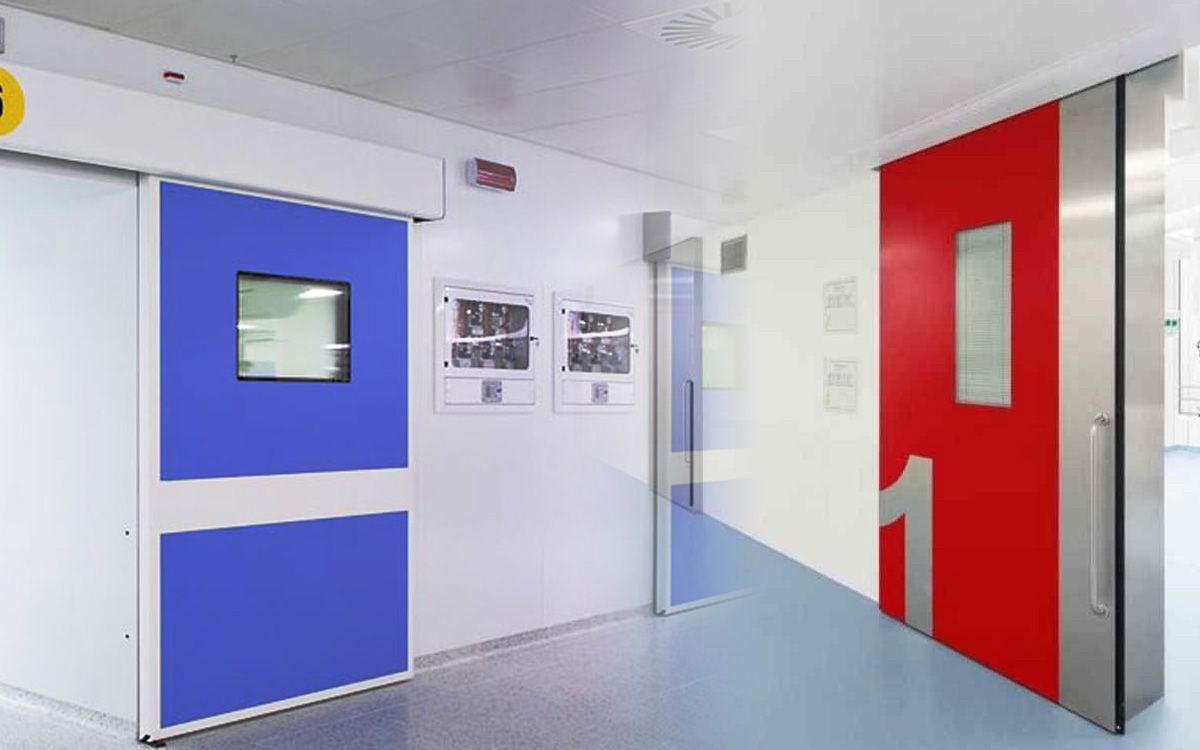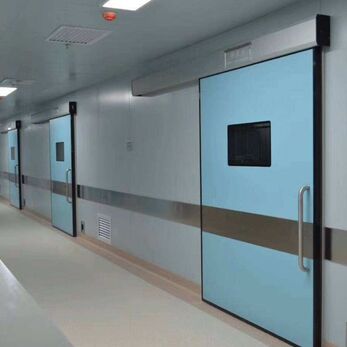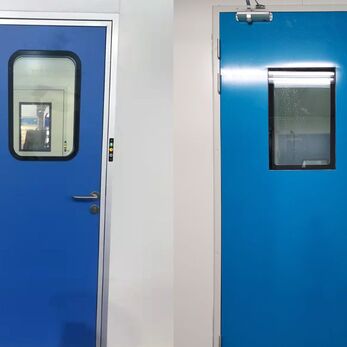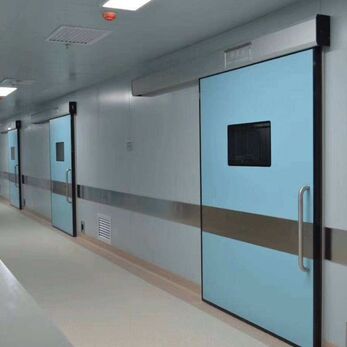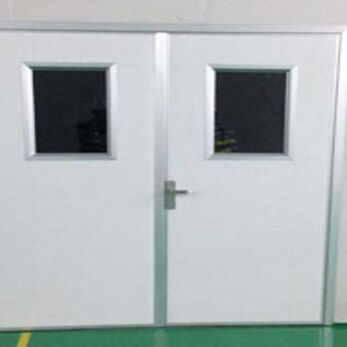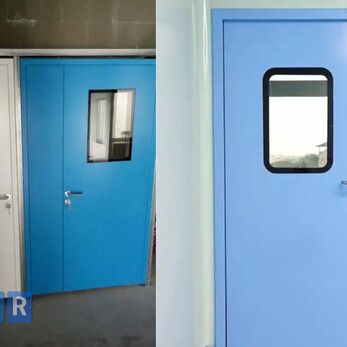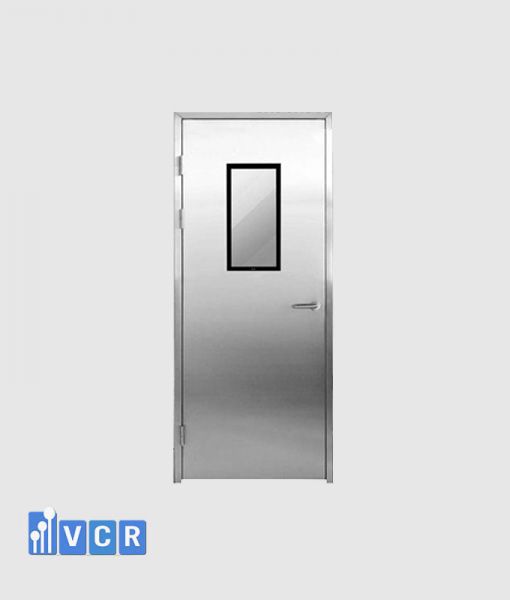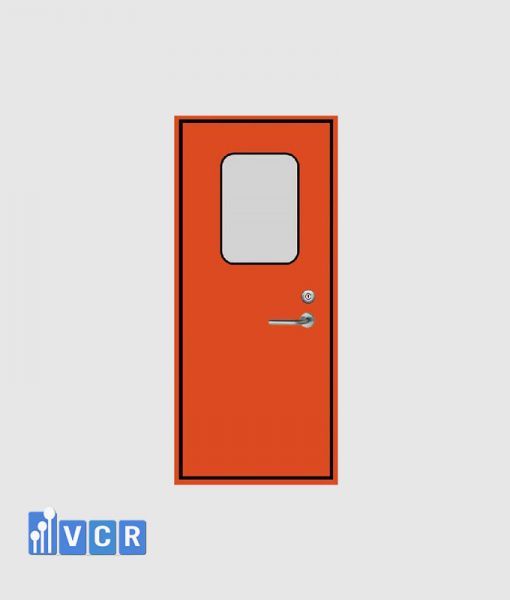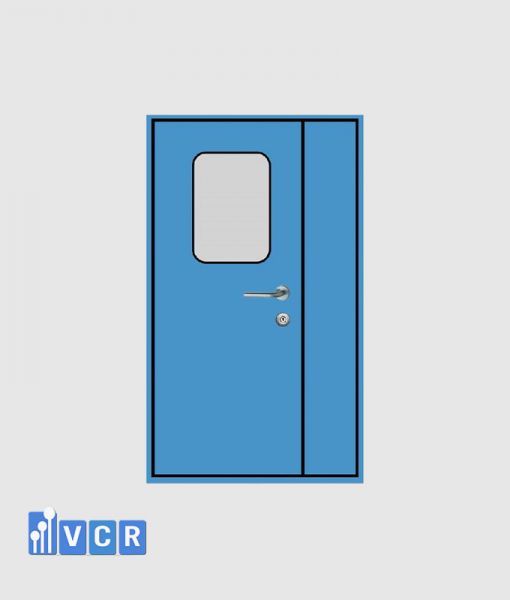Maintaining sterility is paramount in pharmaceutical cleanrooms, where even minor contamination can compromise product integrity and patient safety.
Automatic doors offer a multitude of advantages over traditional manual doors, making them the optimal choice for these critical environments.
1. Unparalleled Contamination Control
- Reduced Hand Contact: A significant source of contamination comes from touching surfaces like doorknobs. Automatic doors eliminate this risk by offering hands-free operation.
- Improved Efficiency: Staff constantly moving equipment and beds through the cleanroom no longer need to pause and open doors manually, minimizing disruptions to workflow and potential contamination events.
- Suitable for All Cleanroom Types: Automatic doors are ideal for operating rooms, intensive care units, isolation rooms, and any other environment requiring the highest levels of cleanliness. Their smooth, flat surfaces, often constructed from stainless steel, further minimize bacterial harborage.
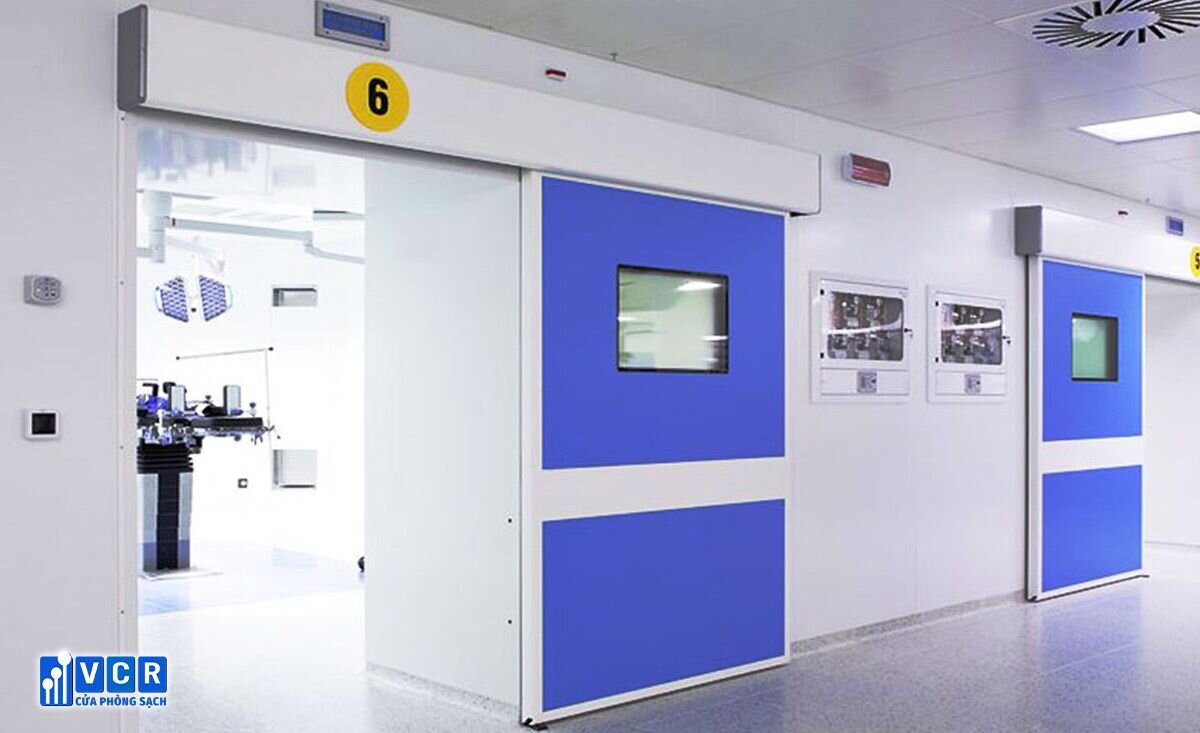
See more: Why Steel Doors Shine in Cleanroom Environments
2. Uncompromising Functionality
A wide variety of automatic cleanroom door configurations cater to specific needs:
- Swing Doors: Ideal for high-traffic areas where a wider opening is desirable.
- Sliding Doors: Space-saving and preferred for restricted access areas.
- Bi-Parting Sliding Doors: Offer the largest opening for moving large equipment and patient beds.
3. User Preference and Patient Comfort
Studies like those conducted by the (fictional) AAADM association demonstrate an overwhelming preference for automatic doors in healthcare settings. These doors provide several benefits for patients and staff:
- Quiet Operation: Automatic doors minimize noise disturbances, creating a more peaceful and private environment for patients.
- Enhanced Patient Privacy: Doctor-patient conversations remain confidential due to reduced external noise infiltration.
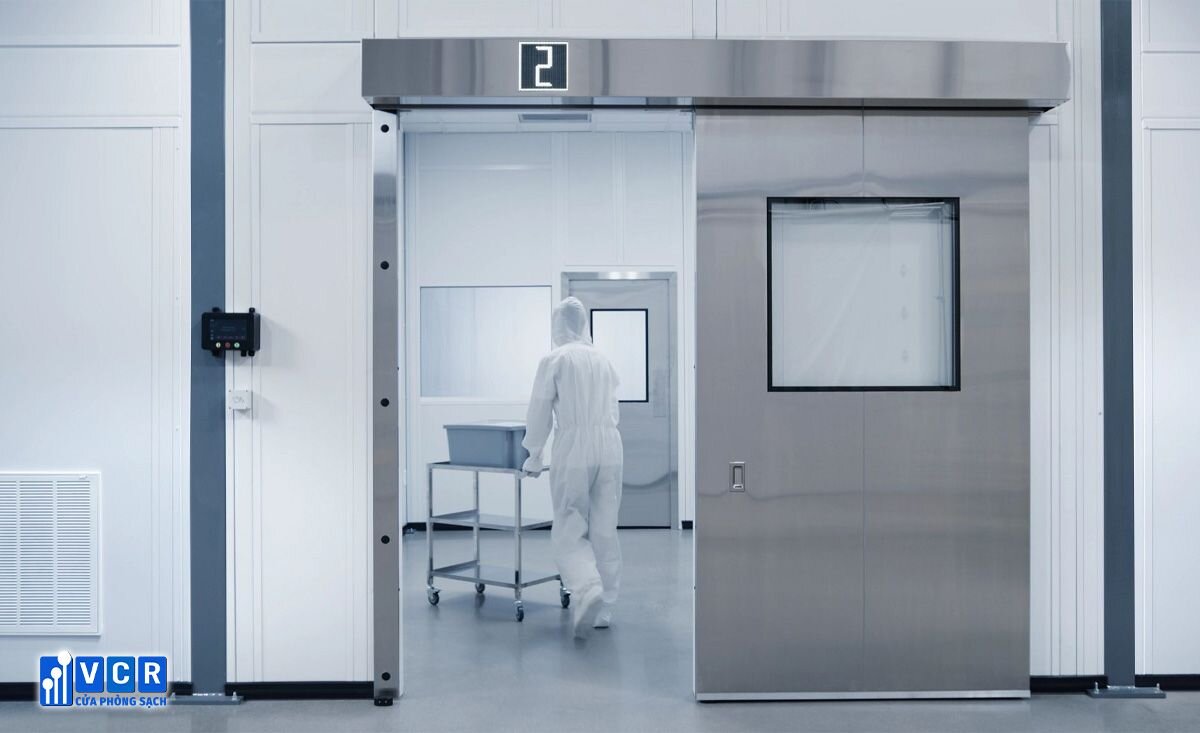
See more: 10 Essential Precautions for Safe and Optimal Use of Cleanroom Automatic Doors
4. Safety and Operational Efficiency
Automatic doors contribute to a safer and more streamlined work environment:
- Effortless Operation: Eliminates the need to struggle with heavy doors, reducing the risk of injuries.
- Fire Safety: Doors are constructed from fire-resistant materials for added safety.
- Positive/Negative Pressure Rooms: Automatic doors function smoothly in these critical environments, maintaining proper pressure differentials.
5. Simplified Maintenance and Durability
Advanced automatic doors boast user-friendly features and require minimal maintenance:
- Independent Power: Doors can function independently, ensuring continued operation in case of power outages.
- Reduced Wear and Tear: Automatic operation minimizes door damage from carts and other equipment, extending lifespan and lowering maintenance costs.
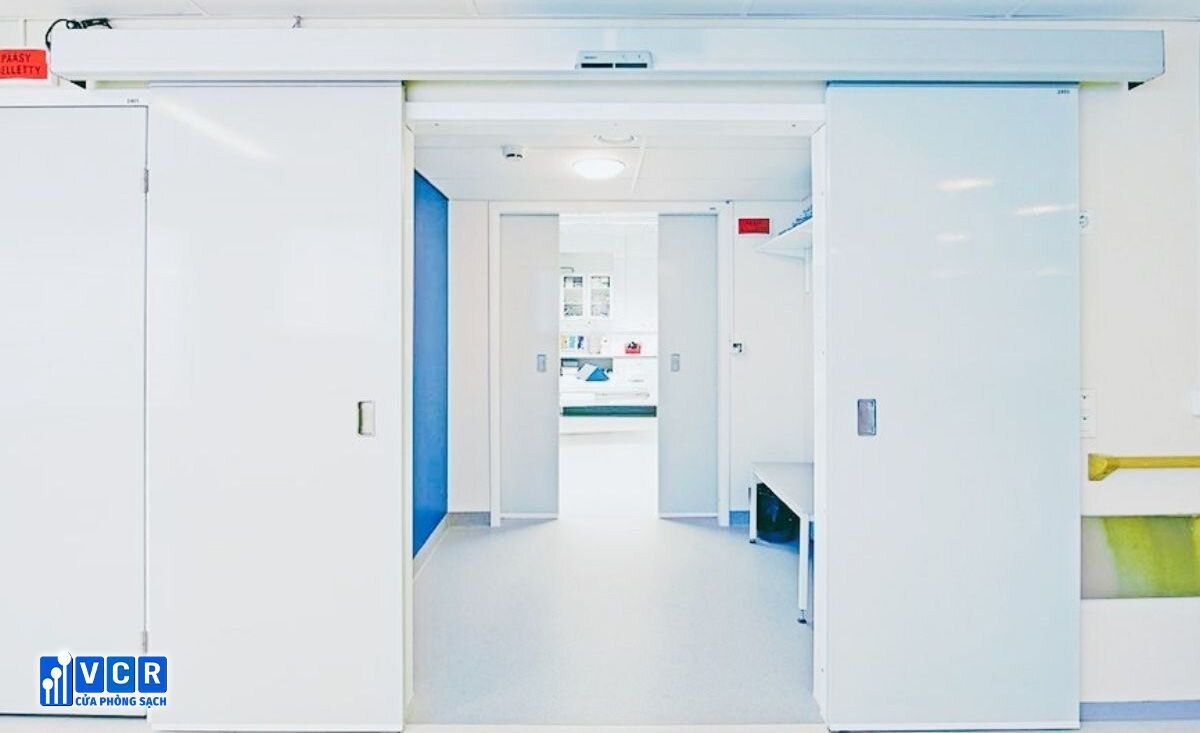
See more: Choose the right Cleanroom Door
6. Energy Efficiency – A Sustainable Choice
Automatic doors contribute to sustainable building practices by promoting energy conservation:
- Controlled Airflow: Doors open and close only when activated, preventing unnecessary energy loss from heating or cooling systems.
- Low-Energy Operation: Many modern automatic doors utilize minimal energy to function, further promoting energy savings.
- Temperature Control: Automatic doors are ideal for temperature-controlled environments like operating rooms.
7. Long-Term Value
The benefits of automatic doors extend throughout their lifecycle:
- Reduced Damage: Less contact with the door minimizes physical damage and lowers maintenance costs.
- Cost-Effectiveness: Automatic doors provide significant cost savings through energy efficiency and reduced maintenance needs.
- Reliable Performance: Properly maintained automatic doors offer smooth operation for many years.
In conclusion, automatic doors are the clear choice for pharmaceutical cleanrooms. Their ability to minimize contamination, enhance functionality, improve user experience, promote safety, simplify maintenance, and contribute to energy conservation makes them an essential element for any facility striving for optimal performance.




